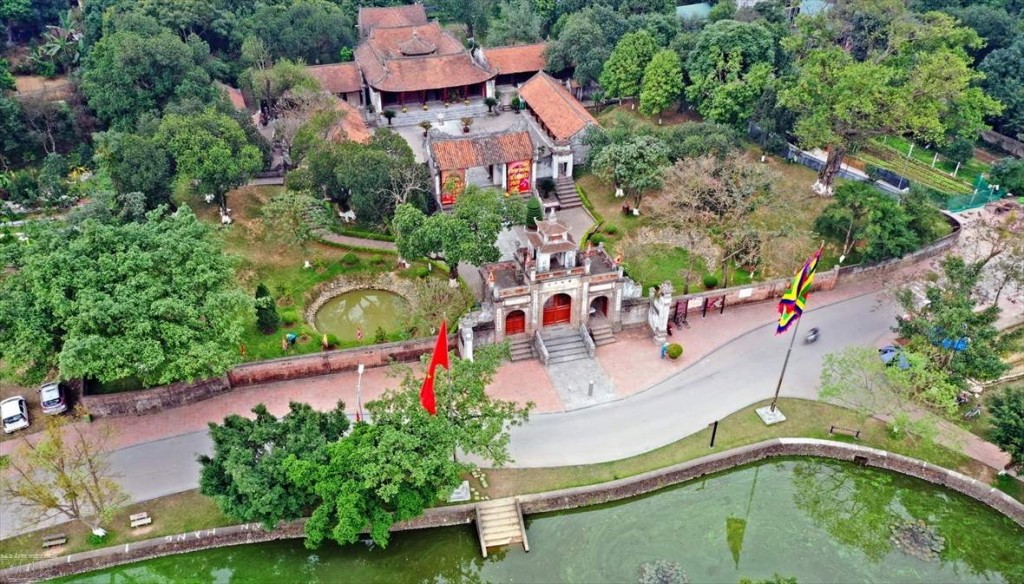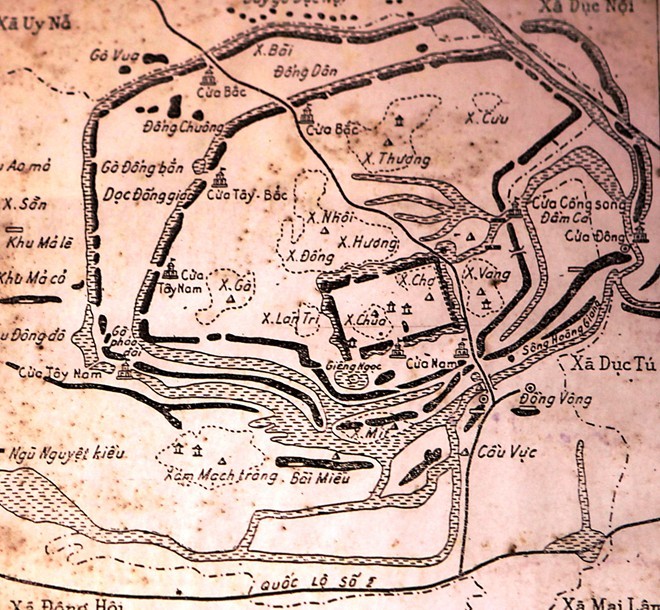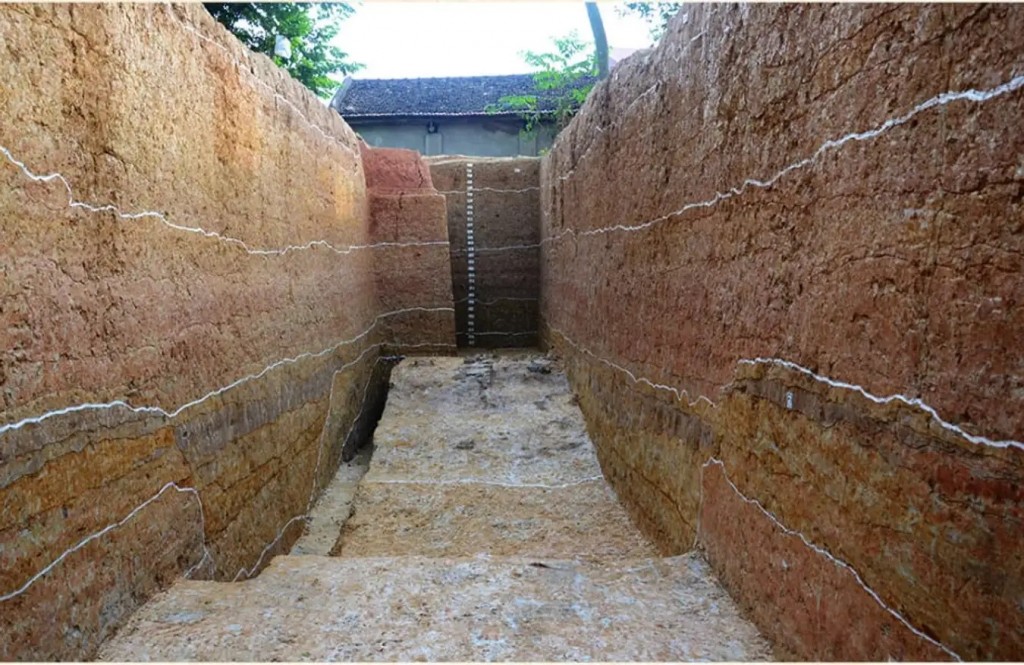Explore Vietnam's ancient Co Loa citadel
Co Loa Citadel today is not only a cultural heritage, evidence of the creativity, technical level as well as culture of the ancient Vietnamese people, but also an ideal destination for tourists from all over. Co Loa Citadel is not only associated with the legends of the Vietnamese people, such as King An Duong Vuong's establishment of the capital, Kim Quy's magic crossbow shooting down hundreds of invaders in one shot or My Chau's tragic and touching love story - Trong Thuy... but also a unique tourist attraction of Hanoi Capital.
Co Loa Citadel is not only associated with the legends of the Vietnamese people, such as King An Duong Vuong's establishment of the capital, Kim Quy's magic crossbow shooting down hundreds of invaders in one shot or My Chau's tragic and touching love story - Trong Thuy... but also a unique tourist attraction of Hanoi Capital.
Known as the largest ancient citadel in Vietnam, Co Loa historical site is about 500 hectares wide, built by King Thuc An Duong Vuong in the 3rd century BC to be the capital of Au Lac (the name of Vietnam during the period). that), now belongs to Dong Anh district, a suburb of Hanoi. According to legend, Thuc An Duong Vuong built the citadel many times that day but all collapsed. Until the god Kim Quy appeared and walked around many times under the temple. At this time, King An Duong Vuong built the citadel following the footsteps of the golden turtle. From then on, the city never fell again.
According to legend, Thuc An Duong Vuong built the citadel many times that day but all collapsed. Until the god Kim Quy appeared and walked around many times under the temple. At this time, King An Duong Vuong built the citadel following the footsteps of the golden turtle. From then on, the city never fell again.
Co Loa Citadel is a construction project with a unique scale in Au Lac country. This place used to have a solid defense system and a powerful army of soldiers.
The citadel has nine spiral-shaped rings, so the people of the ancient citadel also called it Snail citadel. Due to the destruction of time and war, the citadel currently has only three rings left with ancient vestiges, which are the inner citadel, the loyal citadel and the outer citadel. The outer citadel has a circumference of about 8km, built by the method of excavating the soil wherever you go, digging trenches there, building ramparts, and building adjacent ramparts. The ancient ramparts were 4 - 5m high, especially some were 8 - 12m high.
The outer citadel has a circumference of about 8km, built by the method of excavating the soil wherever you go, digging trenches there, building ramparts, and building adjacent ramparts. The ancient ramparts were 4 - 5m high, especially some were 8 - 12m high.
The central citadel has a circumference of about 6.5km, and has the same structure as the outer citadel but the area is narrower and more solid.  The inner citadel has an area of about 2 square kilometers and is the residence of King An Duong Vuong and his concubines, beauties and mandarins under the court.
The inner citadel has an area of about 2 square kilometers and is the residence of King An Duong Vuong and his concubines, beauties and mandarins under the court.
An Duong Vuong Temple, also known as Thuong Temple, is located in the center of the inner city. The temple is located on a mound shaped like a dragon's head, on both sides are two forests, and below are two round holes that are dragon eyes. Right in front of Thuong Temple is a large lake, inside there is Ngoc well - the place where Trong Thuy committed suicide in the legendary story. The water in Ngoc well, if viewed from a distance, will be slightly red in color, standing out among the clear blue lake water and cool trees. The temple still retains a number of relics such as a bronze statue of An Duong Vuong, two Hong and Bach horses, items made of bronze, porcelain, wood, fabric... In front of the gate are two stone dragons with curved bodies and clawed hands. The beard is carved extremely delicately, bearing the architectural style of the Le Dynasty.
The temple still retains a number of relics such as a bronze statue of An Duong Vuong, two Hong and Bach horses, items made of bronze, porcelain, wood, fabric... In front of the gate are two stone dragons with curved bodies and clawed hands. The beard is carved extremely delicately, bearing the architectural style of the Le Dynasty.
Located right behind a thousand-year-old banyan tree shading a large yard, the banyan tree splits into an archway opening the way to Am Ba Chu. There is a statue called My Chau statue here - a natural rock shaped like a headless person, so the villagers call it My Chau's tomb. Legend has it that, after throwing herself into the sea to commit suicide, My Chau turned into a big stone and drifted to Duong Cam beach in the east of Co Loa citadel. People in the city brought the hammock on a stretcher back to the banyan tree, but the hammock broke and a stone fell, so they built a shrine on the spot.
Legend has it that, after throwing herself into the sea to commit suicide, My Chau turned into a big stone and drifted to Duong Cam beach in the east of Co Loa citadel. People in the city brought the hammock on a stretcher back to the banyan tree, but the hammock broke and a stone fell, so they built a shrine on the spot.
In 1962, Co Loa was ranked as a state-level historical and cultural relic. It has all kinds of relics: communal houses, temples, pagodas, temples, shrines. It contains many Vietnamese cultural values through many generations.
Every year on the 6th day of the first lunar month, the people of Co Loa organize a solemn festival to commemorate those who contributed to building the citadel, especially to pay tribute to An Duong Vuong, the founder of the European feudal state. Lost

































